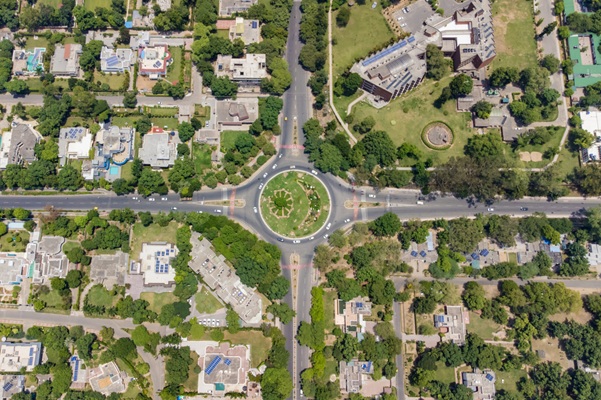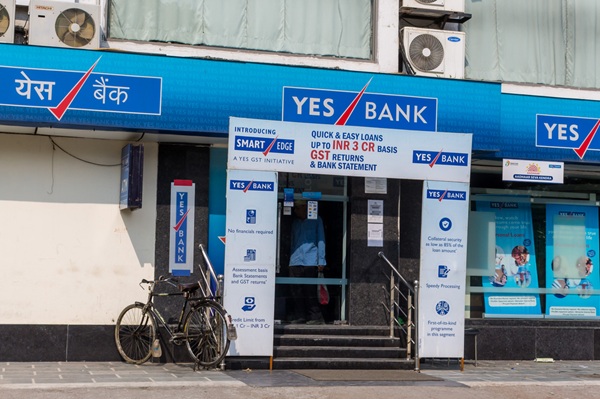.png)

Dr Arvind Mayaram is a former Finance Secretary to the Government of India, a senior policy advisor, and teaches public policy. He is also Chairman of the Institute of Development Studies, Jaipur.
November 11, 2025 at 6:26 AM IST
India’s energy transition is not just a technical project; it is a civilisational moment. It redefines how growth, equity, and ecology can coexist. The country’s success in transitioning to clean energy will depend not only on the amount of solar or wind power it generates, but also on who benefits from it and how it finances this transformation—whether the process can be just, sustainable, and regenerative.
Between 2025 and 2030, India will need nearly $250 billion annually to meet its renewable energy goals (NITI Aayog, 2023). Public finances alone cannot bear this burden. The real challenge, therefore, is not how much money India can mobilise but how effectively that money can circulate—how each rupee can finance multiple projects over its lifecycle.
This is the essence of what I have called circular finance (Mayaram, EPW, 2024). It marks a shift from the linear model—where funds are borrowed, spent, and then locked into long-gestation projects—to a regenerative model in which capital continually re-enters the system through monetisation, refinancing, and reinvestment. Just as renewable energy captures the cyclical power of nature, circular finance captures the cyclical power of money.
Justice and Equity Must Anchor the Transition
Justice must also extend to livelihoods. Coal-dependent regions such as Jharkhand, Chhattisgarh, and Odisha employ over half a million workers directly or indirectly. Abrupt decarbonisation without social cushioning could devastate these economies. India can adapt South Africa’s Just Energy Transition Partnership (World Bank, 2023), which blends concessional global finance with domestic social investment. A Just Transition Fund, supported by green bonds and carbon-market revenues, could finance reskilling and diversification, ensuring that the road to decarbonisation is also a road to dignity.
Decentralised renewable energy (DRE) — from rooftop solar to microgrids — can democratise access by allowing households and small enterprises to become producers rather than passive consumers. Yet such projects remain underfinanced because they are dispersed and perceived as risky. Blending concessional public capital with private lending through revolving funds—where repayments finance new projects—can help close this gap and make equity operational, rather than just a rhetorical concept.
Sustainability Beyond Carbon
India must avoid a telescopic transition—one that telescopes carbon gains into new ecological losses. Sustainability must also be embedded in financial design. India’s forthcoming Green Taxonomy offers a framework for ensuring that finance labelled “green” meets stringent environmental standards, not merely emission targets.
Circular finance reinforces this alignment. Projects that meet sustainability benchmarks—such as those that promote efficient water use or biodiversity protection—should receive preferential refinancing or access to revolving funds. Finance thus becomes a lever of ecological discipline, making environmental responsibility economically rational.
Circular Finance: Bridging Justice, Scale, and Affordability
Circular finance resolves this constraint by making public investment catalytic rather than terminal. The state assumes early-stage risk; private capital scales proven projects; and institutional investors—through Infrastructure Investment Trusts (InvITs)—provide liquidity by purchasing operational assets. The proceeds return to public or concessional lenders, who reinvest in new ventures. This creates a self-renewing flow of capital—from public to private, from debt to equity, and back again.
This regenerative rhythm enables each rupee to fund multiple projects, accelerating deployment and achieving economies of scale. As capital cycles faster, financing costs decline, which reduces tariffs, increases affordability and widens access. Circular finance thus transforms equity into an economic outcome rather than a moral aspiration.
How Circular Finance Works
Development finance institutions (DFIs), such as IREDA, REC, and PFC, can anchor this ecosystem by evolving from lenders to market makers. They can seed early-stage projects, bundle smaller ventures into investible portfolios, and recycle their capital by selling mature assets. The newly-established NaBFID, with its mandate to develop infrastructure bond and InvIT markets, can institutionalise this circularity.
Circularity should also extend across levels of governance. A national Energy Transition Fund could pool carbon-market revenues and sovereign green bond proceeds. States could establish Green Revolving Funds tailored to local priorities—linking, for example, solar revenues in Rajasthan to groundwater replenishment, or using circular finance in Jharkhand to diversify coal-region economies.
A Fiscal Blueprint for a Sustainable Future
As I have argued, the future of fiscal innovation lies not in raising ever more resources but in circulating existing capital more intelligently. When finance mirrors the cyclical rhythms of nature, sustainability becomes not a constraint but a property of the system itself.
If India succeeds in embedding this logic, it will not only meet its climate goals but pioneer a new grammar of development—where wealth is measured not by what we extract, but by what we can continually renew.




